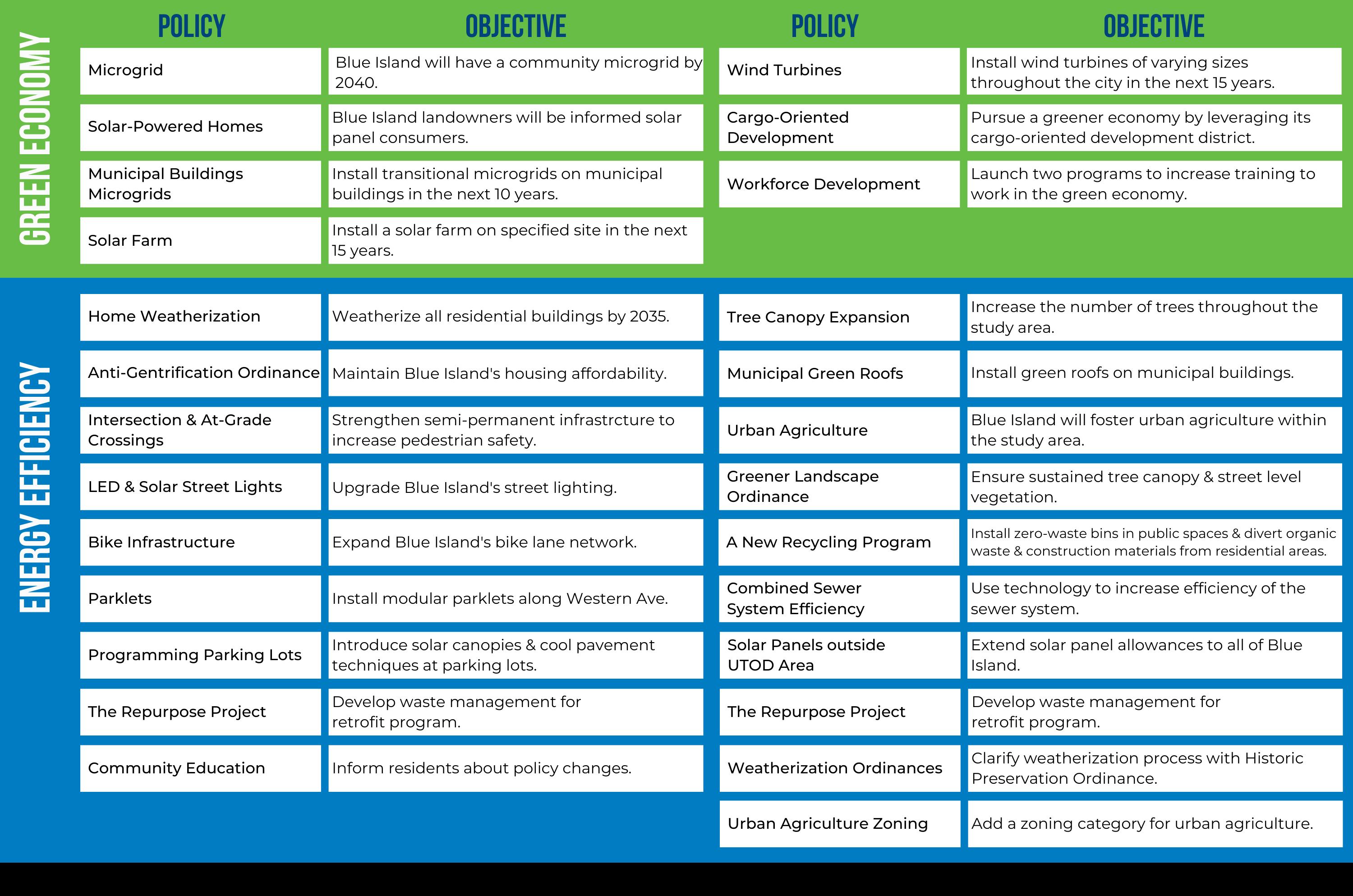
4 minute read
Figure 2-8: Heat Island Map for Blue Island
In 2016, Blue Island budgeted $3,500 for its gas utility bill in general operations. Its expenses were $298.22 Using the $298 expense as a benchmark, the city budgeted $250 for gas utilities in 2018 and 2019. In actuality, the municipality spent $1,788 in 2018 and $3,624 in 2019 on gas utilities in its general operations.2324 This fluctuation and rising costs of utility expenditures could be mitigated by smarter energy solutions in its public assets. Three major public buildings fall within our study area: the City Clerk’s Office, the police station, and the fire department. All three buildings could provide adequate testing grounds for improvements in energy efficiency which could then be extended to other municipal buildings in the future.
Additionally, Blue Island is in the process of updating its public street lighting from traditional bulbs to LED. The city also wishes to change the aging light poles along Western Ave. and hopes to complete both upgrades at the same time. The additional
Advertisement
Figure 2-8: Heat Island Map for Blue Island
1 - relatively mild heat area (slightly above the mean for the city) 2
3
4
5 - severe heat area (significantly above the mean for the city) Wholesale trade makes up the largest concentration of Blue Island’s economy while the greatest proportion of jobs are in the medical and health services. Both of these sectors of the economy use a great deal of energy but are also in a position to increase their energy efficiency and transition to alternative cleaner energy sources through updating technology and changing land use patterns.
Transportation Energy Consumption
cost of the poles, however, has delayed the project due to budget constraints.
Commercial and Industrial Energy Consumption
In 2018, energy consumption breakdown at the state level was 43.8% for commercial and industrial (C&I) purposes.25 In 2009, it is estimated that about
Trust for Public Land (2019).
60% of total electricity usage in Blue Island was for C&I.26 Current energy usage in Blue Island for commercial and industrial uses is difficult to calculate. While today’s exact proportion of Blue Island’s energy is used for C&I purposes is not reported here, it is clear that it is an important consideration when developing an energy plan. In 2018, 34% of energy consumed in the state of Illinois was due to transportation. It is difficult to pin an exact number on how much energy is being consumed for transportation in Blue Island, but the city is taking steps to reduce energy consumption. First, they created UTOD and COD sites located within our study area. Additionally, Blue Island’s comprehensive plan introduced plans to make Western Ave. a complete street. These initiatives are likely to reduce the vehicle miles traveled and encourage traveling using alternative modes of transportation.
Blue Island’s diverse community, affordable housing, and transit infrastructure present a set of opportunities for a clean energy future. Leveraging Blue Island’s assets in a strategic manner to reduce energy usage and promote a local green economy will not only reduce the community’s energy burden, but also catalyze economic growth.

EVALUATING PROGRESS
The first section of this plan analyzed the existing conditions and challenges of the selected study area within Blue Island. This next section will explore policies to help guide the city in meeting green economic future and energy efficiency goals. Each policy addresses the different sections identified from the strengths and weaknesses of the community: microgrid, economy, housing, transportation, heat island effect, waste management, and zoning and ordinances. Accompanying the policies is a set of criteria to evaluate how well they will deliver their intended objectives. The criteria are listed as the following:

POLICY PROPOSALS


Green Economy
The city of Blue Island is moving into a future where environmental sustainability must be facilitated by a green economy.
INTRODUCTION
This movement marks the transition from fossil fuels, which expedite climate disaster, to an innovative and interconnected system of clean and renewable energy. Establishing a green economy in Blue Island is an equitable solution for the prioritization of green energy goals. The following green economy proposals involve the creation of green jobs with respect to the installation of various components of Blue Island’s microgrid and transportation infrastructure. Combined with initiatives for workforce development, Blue Island will be able to provide a future to its residents that remedies the conflict between economic and ecological priorities.
INTRODUCTION
1.0 MICROGRIDS
Microgrids involve the connectivity of infrastructure supported by local renewable energy and other energy resources. Such an investment could not only provide clean and renewable energy to the municipality but create opportunities for green jobs. Job creation is a fundamental aspect of this proposal; the entire microgrid system would generate long-term green employment as the city partners with green technology entrepreneurs (see Section 2.2 for more information on a solar-centered workforce development plan).
Community microgrids are self-reliant, serving thousands of customers. A transitional microgrid is smaller and can power hospital systems and municipal buildings. Microgrids help buildings become energy independent and allow for the integration and distribution of renewable energy. They can also support peak energy use days and even seasons.





